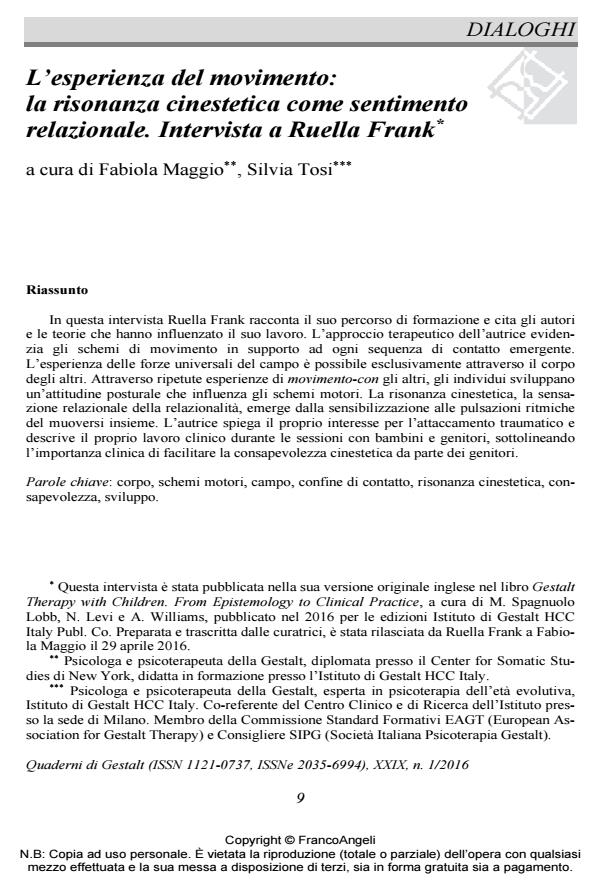Moving experience: kinaesthetic resonance as relational feel
Journal title QUADERNI DI GESTALT
Author/s Fabiola Maggio, Silvia Tosi
Publishing Year 2017 Issue 2016/1
Language Italian Pages 16 P. 9-24 File size 215 KB
DOI 10.3280/GEST2016-001002
DOI is like a bar code for intellectual property: to have more infomation
click here
Below, you can see the article first page
If you want to buy this article in PDF format, you can do it, following the instructions to buy download credits

FrancoAngeli is member of Publishers International Linking Association, Inc (PILA), a not-for-profit association which run the CrossRef service enabling links to and from online scholarly content.
In this interview, Ruella Frank describes her educational background, and the writers and theories that have influenced her work. The author’s approach focuses on movement patterns that support every emerging contact sequence. The experience of the field is only possible through experience of the body of others. Through repeated experiences of moving-with others, people develop a postural attitude that influences movement patterns. Kinaesthetic resonance, the relational feel of relationality, arises from sensitization to the rythmic pulsations of moving together. The author explains her interests in traumatic attaching and describes her clinical work in parent-baby therapy sessions, pointing out the clinical importance of facilitating kinaesthetic awareness on the part of the parents.
Keywords: Body, movement patterns, field, contact boundary, kinaesthetic resonance, awareness, development
- Neural Approaches to Dynamics of Signal Exchanges Alfonso Davide Di Sarno, Raffaele Sperandeo, Giuseppina Di Leva, Irene Fabbricino, Enrico Moretto, Silvia Dell’Orco, Mauro N. Maldonato, pp.415 (ISBN:978-981-13-8949-8)
Fabiola Maggio, Silvia Tosi, L’esperienza del movimento: la risonanza cinestetica come sentimento relazionale. Intervista a Ruella Frank in "QUADERNI DI GESTALT" 1/2016, pp 9-24, DOI: 10.3280/GEST2016-001002